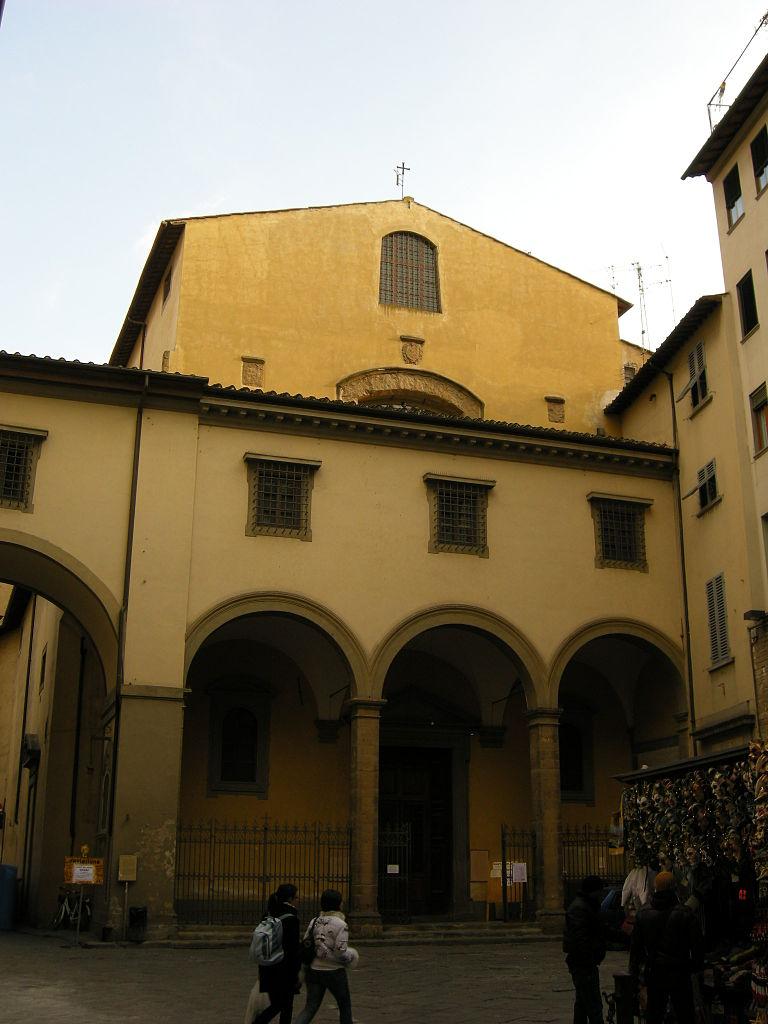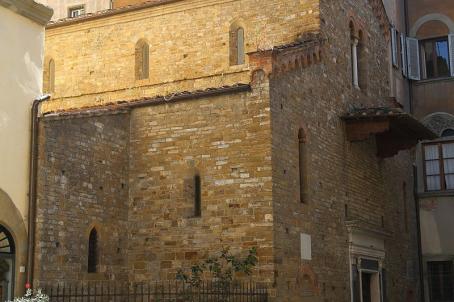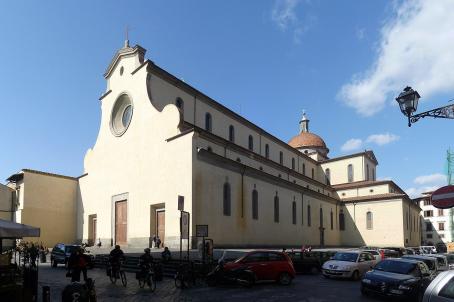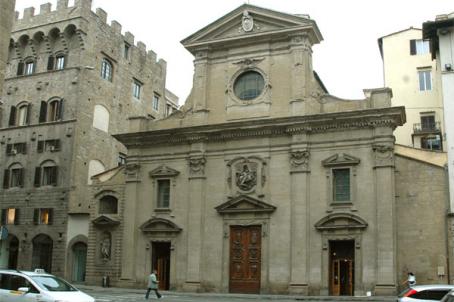Chiesa di Santa Felicita
Santa Felicita was first mentioned in documents in the 10th century. However, the origins of the Christian site are much older. During reconstruction work, two burial slabs were discovered that can be dated to around 417. The present church building is the work of the architect Ferdinando Ruggiere and was built between 1736 and 1739. At the front of the church is the Medici family's footbridge, the Corridoio Vasariano, which connects the Uffizi to the Palazzo Pitti. A passageway to the church and to a balcony in the parish hall allowed members of the family to attend services.






